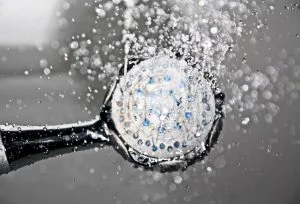Bath Time
If your child gets lice, you want to find out everything you can about these little critters.
It’s natural to want to learn as much as possible. Lice are depicted as mysterious mega-monster bugs that can show up from out of nowhere!
Thankfully, lice do not need to be as scary as they can seem. However, learning more about how lice can be transmitted from person to person helps you to deal effectively with the situation at hand. One question that comes up is about bath time.
If you have more than one child you may wonder if it is ok to bathe both children at once. And what about swimming pools? Or you may wonder if a good bath will take care of the lice problem all together.
A Good Bath
A good bath does so much. It gets your child clean by getting off all the dirt and germs that kids inevitably get all over themselves, but is  it enough to handle lice? Or if you have one child with lice, will it transfer the lice to your other kids?
it enough to handle lice? Or if you have one child with lice, will it transfer the lice to your other kids?
Most bugs that would somehow end up in your child’s hair would come right off in water, especially if you add in a good scrub with shampoo. So it seems natural that a thorough job of scrubbing your child’s hair and scalp could get rid of lice.
However, lice hold on for dear life. Head lice are specifically adapted to being able to hold on to head hair, which is why head lice are only found on human heads. You don’t even need to worry about getting head lice from your dog because of how specifically adapted head lice are to human head hair.
When it comes to the bath, this means that those lice are really good at holding on to the hair. They won’t often wash out like other things children may get in their hair. Additionally, there are the eggs that are essentially glued onto the hair that water just won’t remove.
So if you are hoping that a good head scrub will get rid of lice, unfortunately, the answer is that it won’t. The silver lining, however, is that because of how well lice hang onto hair, it is not very common to get lice from sharing a bath or swimming pool with an infested person.
Even though it is uncommon, the CDC does state that it is possible for lice to survive underwater for significant periods of time making it possible, though not likely, for lice to spread in water. Here is what the CDC says, “Data show that head lice can survive under water for several hours but are unlikely to be spread by the water in a swimming pool. Head lice have been seen to hold tightly to human hair and not let go when submerged under water. Chlorine levels found in pool water do not kill head lice.”
The take-away is that it is a good idea to avoid sharing a bath with someone that has a lice infestation. Even though the chances of getting lice through a shared bath is low, if you know that one of your children has lice it is best to keep them out of the bath with your other children. At the same time, because the chances of getting lice through sharing water is so low, don’t feel worried about public pools.
After the bath, the questions of towels and brushes c me up. As mentioned before, lice are very well adapted to clinging to hair. They aren’t easy to remove. So while the lice will do everything in their power to stay in the hair of the infested person, it is certainly possible that a towel will pick some up or that a hairbrush will dislodge a louse or two. For that reason, it is best to avoid sharing things that come into direct contact with an infested person’s head.
As mentioned before, lice are very well adapted to clinging to hair. They aren’t easy to remove. So while the lice will do everything in their power to stay in the hair of the infested person, it is certainly possible that a towel will pick some up or that a hairbrush will dislodge a louse or two. For that reason, it is best to avoid sharing things that come into direct contact with an infested person’s head.
Better than a Bath
For treating lice, you need something more effective than a bath. You need something that kills both the lice and the eggs. Most lice shampoos only kill the already hatched lice leaving behind the eggs that will hatch in a few more days.
No worries! Look up the nearest Lice Clinics of America location and schedule an appointment. Their sophisticated treatment is quick, easy, effective, and uses no chemicals. In about 90 minutes, the treatment will take care of both the lice and eggs so you can get back to life as usual!











Leave a Reply
Want to join the discussion?Feel free to contribute!